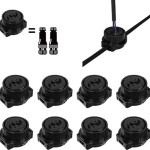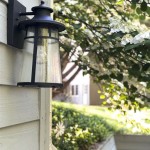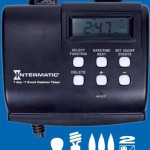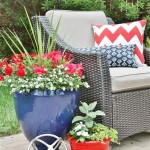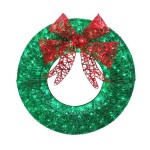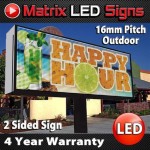Is My Extension Cord Indoor or Outdoor?
Extension cords are essential for extending the reach of electrical outlets, but their functionality hinges upon their intended use. Understanding the difference between indoor and outdoor extension cords is crucial to ensure safety and prevent potential hazards. This article explores the key distinctions between these two types, providing guidance on how to identify and properly use them.
Key Differences: Construction and Materials
The fundamental difference between indoor and outdoor extension cords lies in their construction and the materials used. Indoor cords are designed for use within enclosed spaces and lack the weather-resistant properties of their outdoor counterparts. Here are some key distinctions to note:
- Jacket Material: Indoor extension cords typically have a jacket made of PVC (polyvinyl chloride), which is a common, flexible plastic. Outdoor cords, on the other hand, use a more durable and weather-resistant jacket, such as thermoplastic rubber (TPR) or neoprene.
- Wire Gauge: The thickness of the wire (gauge) is crucial for carrying electrical current. Indoor cords often have thinner gauge wiring, adequate for lower power applications. Outdoor cords typically employ thicker gauge wiring to handle the potential for increased power demands and to prevent overheating in harsh weather conditions.
- Plugs and Outlets: Indoor extension cords may use standard, non-grounded plugs and outlets, while outdoor cords are often equipped with grounded plugs and outlets, providing an extra layer of safety.
- Moisture Protection: Outdoor cords are designed to withstand moisture and are usually equipped with features like watertight seals and weather-resistant connectors. Indoor cords lack these protections and should not be exposed to rain, snow, or humidity.
Identifying Your Extension Cord
While some extension cords may have explicit markings indicating their intended use, most rely on subtle cues. Here are some visual clues to determine whether your extension cord is for indoor or outdoor use:
- Jacket Material: Examine the jacket of the cord. A flexible, shiny PVC jacket likely indicates an indoor cord. A thicker, rubbery, or textured jacket, often featuring a weather-resistant design, suggests an outdoor cord.
- Plugs and Outlets: Observe the plugs and outlets of the cord. Grounded plugs and outlets with a third prong are a strong indicator of an outdoor cord. The presence of a tamper-resistant outlet may also suggest an outdoor application.
- Labeling: Check for labels or markings on the cord. The presence of phrases like "Weatherproof," "Heavy Duty," or "Outdoor Rated" confirms that the cord is designed for outdoor use. The absence of such markings indicates that it's intended for indoor use only.
Safety Considerations: Using Extension Cords Properly
Using the appropriate type of extension cord is fundamental for safety. Misusing an extension cord can lead to electrical shocks, fires, or damage to electrical appliances. Here are some vital safety considerations:
- Never Use Indoor Cords Outdoors: Indoor extension cords are not weatherproof and are susceptible to damage from moisture, rain, snow, or humidity. Using them outdoors can lead to electrical hazards and should be strictly avoided.
- Never Submerge Cords in Water: Whether indoor or outdoor, extension cords should never be submerged in water. Water can compromise the insulation, leading to short circuits or electrical shocks.
- Inspect Cords Regularly: Before using any extension cord, inspect it for signs of damage, such as frayed wiring, exposed wires, or cracks in the jacket. Replace damaged cords immediately, as they pose a significant safety risk.
- Avoid Overloading: Extension cords have a specific electrical rating. Overloading a cord by connecting too many appliances or using them for high-power devices can lead to overheating and potential fire hazards. Refer to the cord's label for its maximum wattage rating.
- Use Cords Properly: Extension cords are meant for temporary use. Avoid using them as permanent wiring solutions. Unplug cords when not in use.
By understanding the distinctions between indoor and outdoor extension cords and following safety guidelines, you can ensure the safe and effective use of these important electrical accessories.

Dos And Don Ts Of Extension Cords Rainbow Restoration

What S The Best Way To Run Power Outside Mr Electric

Extension Cord And Power Strip Safety

Are My Extension Cords Safe Electrical Safety Passion Electric

The 5 Best Extension Cords For Your Home And Garage Of 2024 Reviews By Wirecutter

Five Simple Extension Cord Rules To Improve Work Site Safety Occupational Health

Can Extension Cords Get Wet

Hdx 50 Ft 16 3 Light Duty Indoor Outdoor Landscape Extension Cord Green Hd 809 543 The Home Depot

Things You Should Know Before An Extension Cord Home Sweet Homes

A Full Guide To Types Of Extension Cords Gauge S Length
